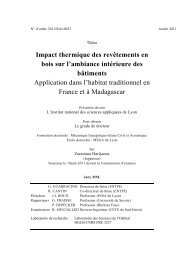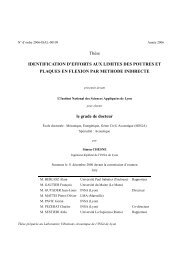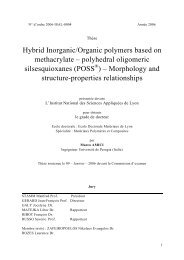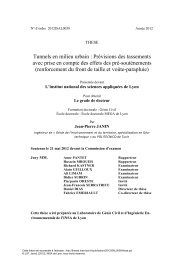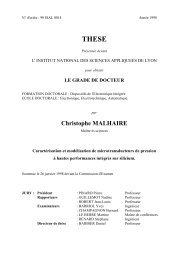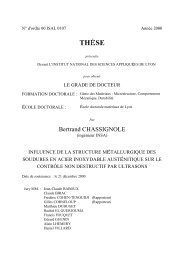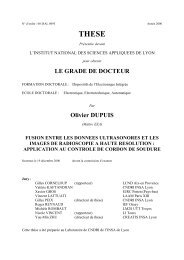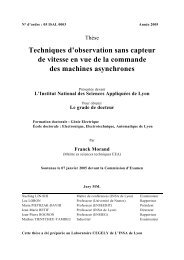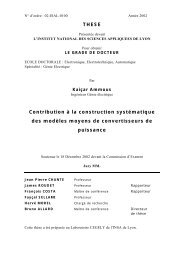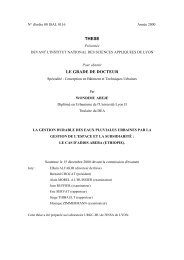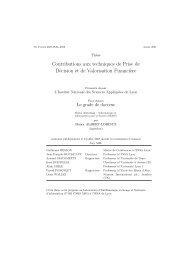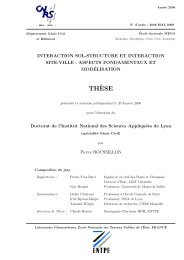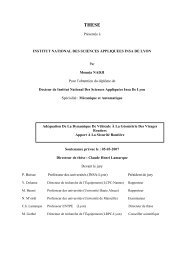Segmentation d'images couleur par un opérateur gradient vectoriel ...
Segmentation d'images couleur par un opérateur gradient vectoriel ...
Segmentation d'images couleur par un opérateur gradient vectoriel ...
You also want an ePaper? Increase the reach of your titles
YUMPU automatically turns print PDFs into web optimized ePapers that Google loves.
QUANTIFICATION ET MORPHOLOGIE DE PHASES DE CLINKER PAR ANALYSE D'IMAGE.<br />
New methods for clinker phase recognition<br />
using automatic image analysis 4<br />
a, b<br />
a a a<br />
A. ANWANDER , B. NEYRAN , J. HAASE and A. BASKURT<br />
a CREATIS, CNRS Research Unit (UMR 5515), affiliated to INSERM, Lyon, France.<br />
b LAFARGE CIMENTS, Research Center Viviers, France.<br />
Abstract<br />
Microscopic analysis provides information about the dimensions and the crystallographic<br />
composition of polished sections of Portland cement clinker. To reduce the amo<strong>un</strong>t of expert<br />
time needed to acquire reliable data and to make the work easier, the use of modern tools offered<br />
by computer image analysis is proposed. The objective of this study is to develop a new<br />
automatic image analysis procedure for performing phase distribution analysis. New algorithms in<br />
digital image analysis of clinker are proposed and their advantages over the previous studies are<br />
shown. To complete the analysis by crystal measurement, a fast interactive method is developed<br />
The proposed automatic image analysing system uses colour images acquired from the<br />
optical microscope by a video-camera and a PC. The image analysis procedure is based on the<br />
model of the well-known point co<strong>un</strong>ting process. Image points are taken in regular distances and<br />
they are assigned to the different crystal classes. A point is classified by the texture and colour<br />
characteristics of its neighbourhood, which allows the identification the crystals in clinkers of<br />
different origins, with variations on the chemical etching.<br />
The tool for crystal analysis was designed to minimise human intervention and the burden<br />
of manual operations. The practical use shows the ease of use and the economy of this tool. The<br />
results agree to a great extent with those obtained by an expert via point co<strong>un</strong>ting. The tool will<br />
be extended to work out morphological and structural <strong>par</strong>ameters automatically.<br />
4 Cet article a été publié dans le numéro d'avril 1998 du journal international "WORLD CEMENT" (World<br />
Cement, Vol. 29, N° 4, pp. 77-84, 1998) [Anwander et al., 1998].<br />
WORLD CEMENT RESEARCH AND DEVELOPMENT 1998 95



